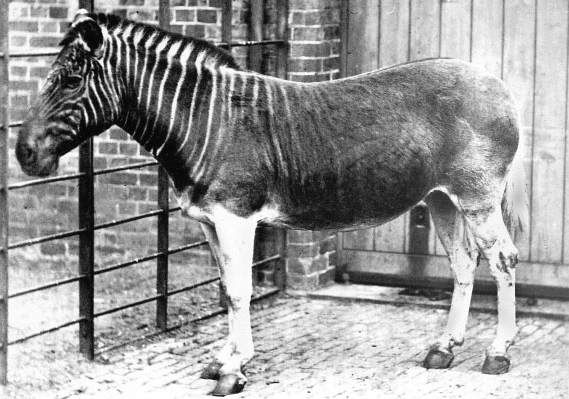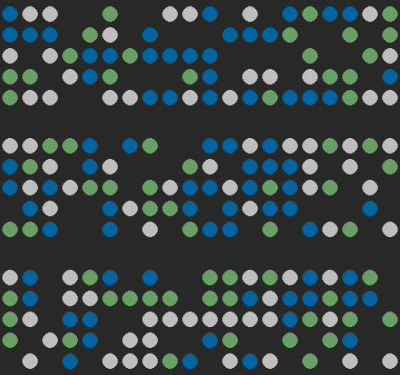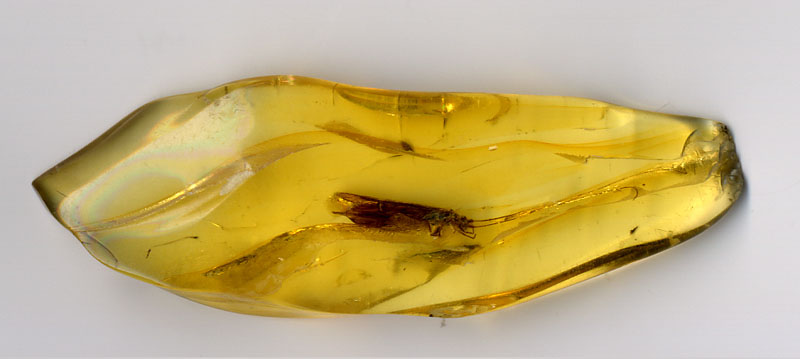
Ancient DNA: A story writ in genes
The Dinosaur Debacle
Picture a day millions of years past, in a land as yet untouched by the vagaries of man.
 Dense forests stretch in every direction from where you stand, and the air you breathe is hot and humid. Now watch, as a magnificent beast, several feet tall, thunders through the undergrowth in determined pursuit of its prey. Years later, men stumbling upon its bones would name it a dinosaur.
Dense forests stretch in every direction from where you stand, and the air you breathe is hot and humid. Now watch, as a magnificent beast, several feet tall, thunders through the undergrowth in determined pursuit of its prey. Years later, men stumbling upon its bones would name it a dinosaur.
The little mouse-like creature it is chasing disappears into a burrow, but not before its mate is snatched up in the dinosaur’s crushing jaws. While the predator stands enjoying its meal, it barely notices the little spot of irritation on its shoulder, where a resourceful mosquito sits feasting on the giant’s blood.
As the dinosaur moves on, the mosquito flies off to a nearby pine tree, where it rests for a moment before its next meal. Yet this rest would prove to be fatal, as a drop of the tree’s resin, oozing out from a wound in the tree bark, engulfs the hapless mosquito. The resin solidifies, and over millions and millions of years, turns slowly into amber. In the present day, fossil-hunters discover the piece of amber with the perfectly preserved mosquito inside. It would have been dismissed as a curiosity, if it weren’t for some scientists, who, while examining the fossil, discover a drop of dinosaur blood stuck in the mosquito’s tiny stomach. From this drop of blood, they extract DNA, the molecular blueprint of life. Using this DNA, they are able to build a dinosaur genome artificially, and then clone and produce living dinosaurs, enough to fill an island. Enough, in fact, to form a dinosaur theme park.
And thus is a story born, that of Stephen Spielberg’s masterpiece and one of the most iconic films of the 20th century – Jurassic Park.


Spielberg’s movie, which is based on a book by Michael Crichton, is founded on some very real scientific outpourings of that era. In the 1990s, a number of research groups from around the world reported the extraction of intact DNA from ancient insect fossils preserved in amber. While, to the best of my knowledge, no drop of dinosaur blood with dinosaur DNA was ever recovered from an amber fossil, there were enough and widespread studies of fossilized insect DNA sequences that suggested that this was possible. Yet, in the back of many scientific minds, there was a glimmer of doubt, perhaps fanned by the astounding success rates of such studies. Ancient DNA is notoriously difficult to obtain and analyze, and yet reports of doing exactly so continued to pour in in spades. In 1997, Jeremy Austin and colleagues, of the Natural History Museum, London, decided to try and see whether these studies could be replicated.
They took more samples than all the other studies before this had had combined, and used a large number of extraction and amplification methods to try and obtain authentic ancient insect DNA. The results were surprising. Most of the samples did not yield sufficient amount of analyzable DNA, and those that did so were inevitably found to be contaminated with modern DNA. This and other studies later went on to establish that it is virtually impossible to retrieve usable DNA from amberized fossil remains, and all of the sensational reports that had come earlier had failed the key test of scientific validity – reproducibility.
In my opinion, this little story demonstrates everything that is exciting and problematic in the field of ancient DNA research, a field that hit its 30th year in 2014.
“The Secret of Life”
When James Watson and Francis Crick discovered the structure of DNA in 1953, Crick famously informed stunned diners at Cambridge’s Eagle pub – “We have discovered the secret of life”. Given the import of the structure they had just deduced, the statement is perhaps not so surprising. DNA (DeoxyriboNucleic Acid) is a very large molecule, two copies of which are present inside each of our body’s cells, enclosed in a compartment called the nucleus. DNA carries all the information that is necessary for an organism to develop from an embryo, grow, and carry out all basic functions. Every organism’s DNA is slightly different from others and is more similar to those individuals that it is closely related to. When we have children, we pass on our DNA to them, and this forms the basis for heredity.
 DNA can do all of this because of its unique and elegant structure. Simply speaking, DNA consists of two long chains that wrap around each other in the form of a double helix. Each chain is made up of repeating units called nucleotides, consisting of bases, which come in four flavors – A, T, G and C. The sequence in which A, T, G, and C are arranged on DNA forms the code for all the information necessary for sustaining life. Know a person’s DNA sequence, and you pretty much have a tiny molecular signature of that individual, from which you can infer biological information such as their gender, as well as deduce the likelihood of several diseases.
DNA can do all of this because of its unique and elegant structure. Simply speaking, DNA consists of two long chains that wrap around each other in the form of a double helix. Each chain is made up of repeating units called nucleotides, consisting of bases, which come in four flavors – A, T, G and C. The sequence in which A, T, G, and C are arranged on DNA forms the code for all the information necessary for sustaining life. Know a person’s DNA sequence, and you pretty much have a tiny molecular signature of that individual, from which you can infer biological information such as their gender, as well as deduce the likelihood of several diseases.
Over time, small changes arise in the sequence of DNA, called mutations, and such changes also get passed down to offspring. When enough such mutations accumulate in a group of animals, they are said to have diverged enough from their ancestors to form a new species. This is why scientists become extremely excited at the idea of obtaining DNA sequences from extinct or ancient animals and plants. Not only does DNA provide us with valuable information about the nature of extinct species, but it also carries the entire evolutionary history of such organisms, letting us fill in missing links and branches in the tree of life.
Unfortunately, DNA, which is exceptionally stable during our lifetimes, becomes extremely fragile once we die. Soon after death, nucleases, little enzymes which break DNA down into tiny fragments, rush in and destroy whatever DNA remains in the cell. In cases where the body dries very quickly following death, the nucleases themselves get destroyed before they can cut up the DNA. However, even in such cases, DNA continues to get damaged, now because of physical rather than biological processes. Oxidation and hydrolysis are two such processes that damage DNA, causing it to fragment, crosslink with other molecules such as proteins, change its base structure, and ultimately become utterly unrecognizable from the original. This sets a hard time limit on how much ancient DNA is salvageable, though this can differ based on the environmental conditions at which the fossils were preserved – for e.g. better recovery is possible from fossils from colder climates.
Here, scientists are helped greatly by the existence of mitochondrial DNA. Mitochondria are tiny compartments inside cells whose job is to generate energy for the cell. Mitochondria are unique in the fact that they have their own DNA, which is much smaller and different from the larger, chief nuclear DNA of the cell. Mitochondria are numerous in cells, and mitochondrial DNA is present in many, many copies. This makes the recovery of mitochondrial DNA easier than that of nuclear DNA. Ancient DNA from samples older than 1 million years is generally considered unreliable, and reports of millions-of-years-old bacterial or plant DNA sequences have inevitably been shown to belong to more modern, contaminating material.
The problem of contamination has plagued the field of ancient DNA discovery since its inception. Every living being has its own DNA, which it leaves behind wherever it goes – in the form of shed cells, hair, fur etc. Since the methods used for amplifying and analyzing ancient DNA are so highly sensitive, they are also extremely prone to contamination, contamination that can often not be detected until it is too late. Add this to the limited and damaged nature of the DNA one has to start with, and one begins to wonder how one can ever hope to obtain any meaningful information at all from such attempts.
Baby Steps for Ancient DNA

In those initial years, ancient DNA, following a painstaking extraction process, underwent a cloning procedure, which attempted to replicate these tiny fragments of DNA inside bacterial carriers, a process called library generation. In 1985, Kary Mullis invented the polymerase chain reaction (PCR), a technique that has revolutionized molecular biology. This technique allowed scientists to vastly amplify very small quantities of DNA with a simple chemical reaction in a very short time. Several research groups, including that of Svante Pääbo (regarded by some as the father of ancient DNA), quickly adapted this method and used it to amplify DNA fragments from small samples which would not have been possible to analyze with the older techniques.
However, with the excitement of a new field, a race ensued to see who could publish sequences from the oldest and the flashiest fossils. This was in the early 90s, and these were the dark days of ancient DNA research. Many of these studies were shown later to inadequately control for contamination and suffered from a serious lack of reproducibility. Strict guidelines were later set down to ensure replicability of data, and authenticity of findings, and slowly the aura of skepticism that had begun to surround ancient DNA research began to die down.
The Neanderthal Genome – A success story


Neanderthals were part of an ancient lineage of humans that settled in the northern parts of Europe about 300,000 years ago. The Neanderthals were probably our closest relatives, and were significantly bulkier, with curvier foreheads and larger brains than Homo sapiens, or modern humans. They went extinct around 30,000 years ago, several thousand years after Homo sapiens had moved out of Africa and proceeded to occupy the same lands. Several theories exist regarding how the Neanderthals disappeared, including competition, interbreeding or even genocide by Homo sapiens.


In 1997, Matthias Krings and colleagues in the lab of Svante Pääbo succeeded in obtaining a fragment of mitochondrial DNA from a Neanderthal fossil. This study was remarkable for its research design with stringent controls against contamination, which included replicating the findings in two separate laboratories. Their results showed that Neanderthal DNA was utterly unlike DNA from any race of modern humans, even though it was much closer to human DNA than DNA from chimpanzees, our closest living relatives.
Back-calculations show that the Neanderthal and sapiens lines of humanity probably diverged around 500,000 years ago. Multiple other studies were performed after this on Neanderthal DNA, and in 2006, the sequence of 1 million bases of Neanderthal DNA, both mitochondrial and nuclear was published. The same year, the Neanderthal genome sequencing project was set up by the Max Planck Institute for Evolutionary Anthropology and 454 Life Sciences, a biotechnology company. The project aimed to sequence the entire Neanderthal genome the way the human genome had been sequenced some years earlier.
In 2010, the first draft of the Neanderthal genome, containing information about 4 billion bases, was published in the journal Science. An even more detailed genome sequence was obtained from a 50000-year-old Neanderthal fossil found in a cave in the Altai mountains and was published in 2013 in Nature. At the forefront of the project is Svante Pääbo, who has diligently worked in the field since its very early days and continues to actively carry out research on ancient DNA. You can listen to his fascinating TED talk here.
Analyzing Ancient DNA


Recovering ancient DNA is not easy. First, you need to find a fossil that is preserved well enough to contain a large quantity of undamaged DNA. The most common kinds of tissue used for ancient DNA extraction are fossilized bones, teeth, hair, muscle, seeds or eggshells. Another surprising source of ancient DNA is coprolite, which is basically fossilized poo, or ancient fecal matter. In addition to containing DNA from the animal that excreted them, coprolites often contain DNA from the animal’s last meal, yielding important information about local flora, fauna and diet choices of the organism under question.
Once you have the fossil, your next job is to carefully extract the DNA. Since the DNA is present in extremely tiny quantities, you take extreme care to get the maximum yield possible, but at the same time, your treatments must be mild enough to keep the DNA relatively intact. Finally, you prepare the DNA for sequencing, either amplifying it by cloning or by PCR, and hybridizing it to sophisticated arrays that will do the next step, that of sequencing, for you.

Final Words
In the past 30 or so years, ancient DNA has shed light on many aspects of ancient biology. It has helped establish that the Tasmanian wolf is a close relative of other Australian marsupial mammals, that the Oxford Dodo was a kind of pigeon, and that mammoths are related to elephants (at least no one was surprised by that one). Ancient DNA can help establish evolutionary relationships between extinct and extant species, it can help us trace when populations diverged from each other, and it can help us determine the likelihood of ancient migrations. Efforts are underway to obtain full genomes of several extinct species – the mammoth genome was completed in 2015, while many others are lined up.
With burgeoning technological advancement, and rising accuracy and precision of next generation sequencing methods, the future of ancient DNA looks bright. As larger and larger collaborations are formed, all of us can now hope for a better glimpse into the mysteries of all those who walked this earth before us.
Further Reading
Gilbert MTP, Bandelt HJ, Hofreiter M, Barnes I (2005) Assessing ancient DNA studies. Trends Ecol Evol 20:541–544.
Hofreiter M, Serre D, Poinar HN, Kuch M, Pääbo S (2001) Ancient DNA. Nat Rev Genet 2:353–359.
Hagelberg E, Hofreiter M, Keyser C (2014) Ancient DNA: the first three decades. Philos Trans R Soc B Biol Sci 370
Hofreiter M, Paijmans JLA, Goodchild H, Speller CF, Barlow A, Fortes GG, Thomas JA, Ludwig A, Collins MJ (2015) The future of ancient DNA: Technical advances and conceptual shifts. Bioessays 37:284–293

Really enjoyed the article. As a historian I look for ‘history of science’ readings that help me understand the importance of the sciences throughout history. Thanks.
Thank you! I enjoy reading about and hunting up stories about the ‘history’ of science too – the men (and women) who worked to make things happen, the laboratories they worked in, the day-to-day struggles they went through, all of these show us the human side of science, I think.
t1ilkt
utrxut
0duv91
4nwip8
w0uzt0
u16he0